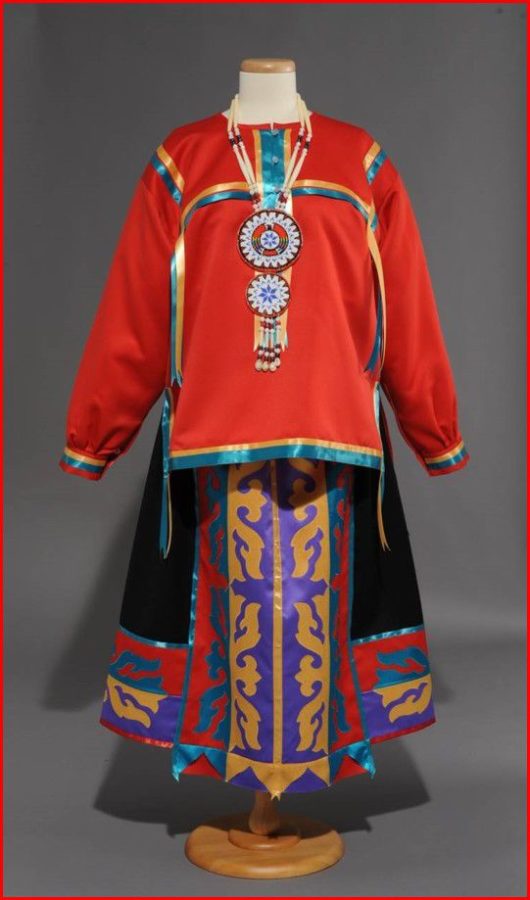Iowa State lecturer carries her grandmother’s influence
Meskwaki ceremonial outfit
March 27, 2017
An Iowa State senior lecturer credits her grandmother’s influence in her love for creating clothing, beginning from doll clothes and continuing with traditional Native ceremonial dress.
Brenda Ackerman began her journey with clothing under the eye of her grandmother, a Meskwaki woman. The relationship between Ackerman and her grandmother would nurture her skills with designing and producing clothing.
“I loved creating with my hands. I love doing things with my hands,” Ackerman said.
Although Ackerman enjoyed sketching, she preferred to work with scraps of clothing left over from her grandmother’s work. Using those scraps, she began to “drape,” or arrange and pin, clothing to dolls she had. She began this at the age of 6 or 7.
Ackerman credited this experience with the beginning of understanding how to use a cut of fabric to fit a person like “rudimentary” pattern making.
Once she was old enough to use a needle and thread she began to sew the scraps together to make doll clothes. The next step for Ackerman was the sewing machine, which was a “state of the art” Singer sewing machine that had more decorative capabilities.
“To me, it was playing on the sewing machine, and she would give me little things to do and I would just, you know, get on the sewing machine,” Ackerman said. “It was more of a relationship rather than learning how to do something.”
Ackerman said her grandmother always kept an eye on her work and perhaps knew that she had a talent for creating clothes.
“Maybe she thought she saw in me that I liked doing this and I was good at it,” Ackerman said.
At 16, Ackerman began helping her grandmother with ribbon shirts that Meskwaki men wore for ceremonies. She used traditional style, opposed to the contemporary style that some tribes wore.
Ackerman also sewed garments for her siblings, but it was when she made a dress for her grandmother that she became apprehensive. She was worried if she had met her grandmother’s standards.
The dress was for her grandmother’s birthday, and Ackerman had planned to make it herself.
“And she said, ‘Where’d you get this?’ and she was looking through it and looking inside … and she turned it inside out and started examining it … and I’m just really kind of nervous,” Ackerman said. “She started looking at it, turning it back, and she says, ‘Well, that looks pretty good. Thank you.’”
To Ackerman, it was a relief to receive her grandmother’s approval.
Ackerman noted that she inherited from her grandmother the trait of flipping clothes inside out to check if the seams are well sewn.
“My garments have to look good on the inside,” Ackerman said. “It makes for a better garment.”
Ackerman also made a second garment for her grandmother, but this was not for everyday wear. It was for her funeral. This ceremonial outfit came as a struggle to her at first.
“When she passed away, I was the only one who knew how to sew in my family,” Ackerman said.
The problem was that she didn’t know how to make this kind of garment. Ackerman said her mother tossed her a traditional skirt and said, “Here is one. We need one in a couple of days.”
Ackerman keeps one piece of knowledge that her grandmother gave her to remember when she is creating a garment.
“She always told me when I’m sewing, make sure you have good thoughts,” Ackerman said. “All those good thoughts are gonna go into the garment, and any bad thoughts you have [are] gonna show, and it’s gonna be the essence of that garment and not good for the wearer.”
Ackerman credited that experience to the completion of her grandmother’s burial outfit.
After tribal members saw the burial outfit, they started to ask for their own ceremonial clothing. Ackerman began making ceremonial outfits and grass dance outfits that sprouted her business, ThunderWorks. She works with customers from different tribes, from her own Meskwaki to Ojibwe, Ho-Chunk and more.
Ackerman has not been able to keep up with her orders throughout the school year due to teaching, but she continues to create ceremonial outfits during the summer.







